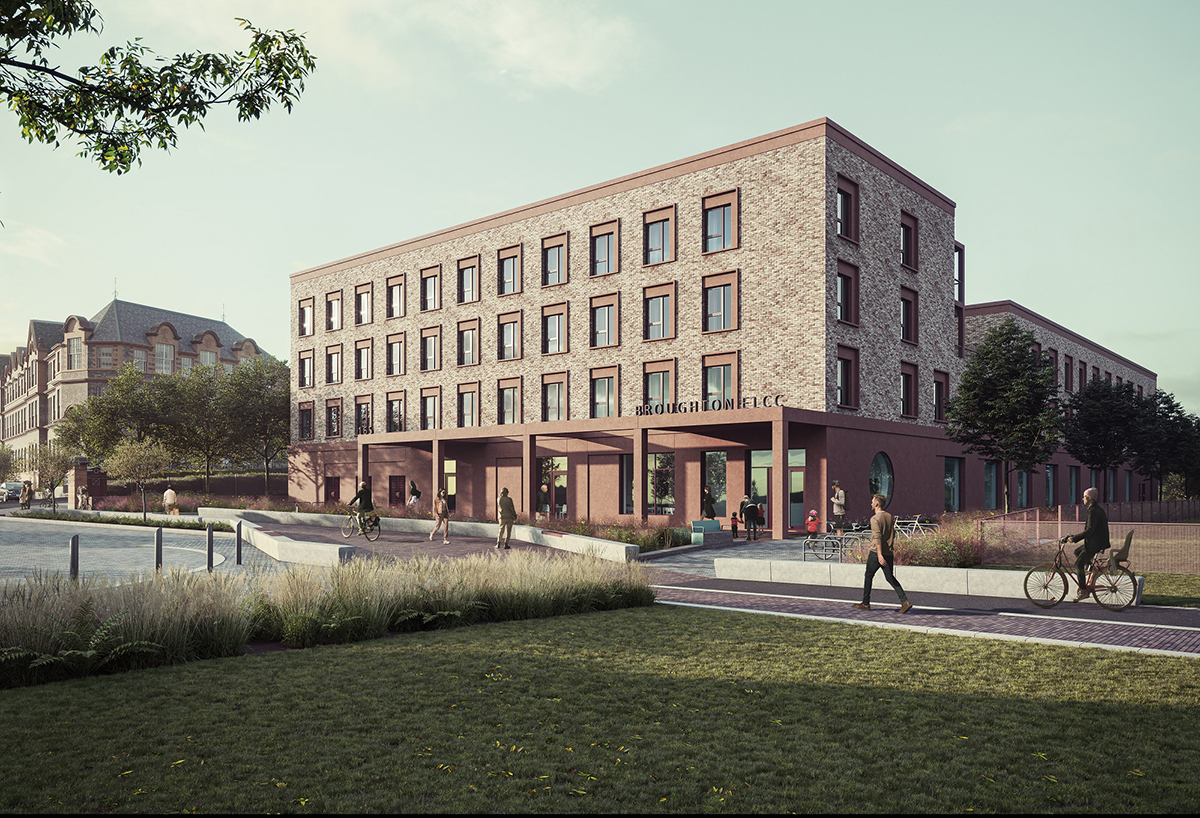
PROPOSALS to deliver a low carbon development at a council-owned site in Broughton have been approved by the Edinburgh planning authority.
Located north of the city centre, the City of Edinburgh Council’s Powderhall project will comprise an early learning and childcare centre as well as 27 homes for the elderly contained within a single ‘intergenerational’ building.
The development has been designed by Collective Architecture and will be constructed by CCG (Scotland).
Up to 128 spaces for children between the ages of 2-5 will be created for the local community, with Broughton Primary School managing day-to-day operations, whilst all of the homes will be wheelchair-adapted with accessibility supported via two lifts and storage for mobility scooters.
Powderhall is to be the first housing development created by the City of Edinburgh Council to a Passivhaus standard. The addition of features such as solar panels and air source heat pumps means the building will be net zero carbon.
CCG MD, David Wylie, said, “Providing access to early learning education as well as creating more homes for the elderly are at opposing ends of our societal agenda but they are both a top priority in helping to support Scotland’s communities and our wider economy.
“To combine both into an integrational building is a unique concept and an exciting challenge for the project partners whilst delivering the council’s first Passivhaus project is a key milestone in our affordable housebuilding partnership. We look forward to commencing works at Powderhall next year.”
Nicola McLachlan, Collective Architecture project architect, added, “The project receiving planning is a tremendous milestone and takes the next step towards contributing to The City of Edinburgh Council’s target of becoming a net zero carbon local authority, and the adoption of the Passivhaus Standard ensures this is a tangible aspiration. In addition to Passivhaus and the proposed renewable technologies, sustainability has been considered throughout the project from the co-location of services and the shared building elements, to the reduction of embodied carbon by incorporating a circular strategy.
“Furthermore, there are many benefits for the client and end users of this project which are provided by the intergenerational approach and in striving to achieve the Passivhaus Standard. Some of these will be felt immediately, while others such as long-term health improvements and access to a high-quality learning environment will be experienced for generations to come.”










